-

ส่งอีเมลถึงเรา
sale@lscmagnetics.com -

เบอร์ติดต่อ
+86 -13559234186

ส่งอีเมลถึงเรา
sale@lscmagnetics.com
เบอร์ติดต่อ
+86 -13559234186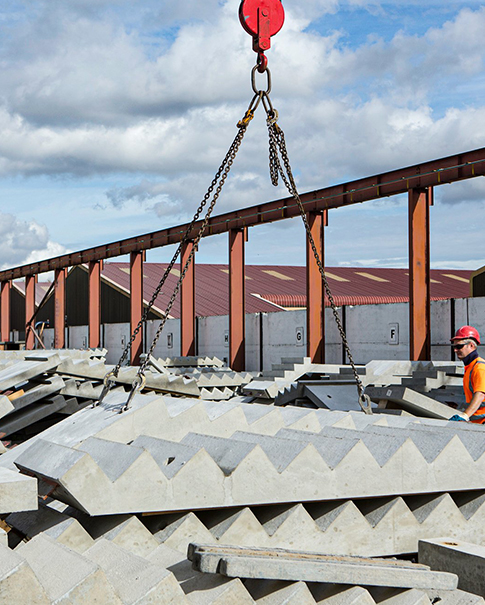
การสวม "ชุดป้องกัน" สำหรับแท่งแม่เหล็ก: การวิเคราะห์ที่ครอบคลุมเกี่ยวกับเทคโนโลยีการเคลือบผิวแท่งแม่เหล็ก
Oct 16, 2025แท่งแม่เหล็กส่วนประกอบหลักของระบบกรองแม่เหล็ก ถูกใช้กันอย่างแพร่หลายในหลากหลายอุตสาหกรรม รวมถึงอาหาร เคมีภัณฑ์ ยา และพลาสติก เพื่อดูดซับและกำจัดสิ่งเจือปนที่เป็นแม่เหล็กเฟอร์โรออกจากวัสดุ คุณอาจเคยเห็นสิ่งเหล่านี้อยู่บ่อยๆ แต่เคยสงสัยไหมว่าทำไมแท่งแม่เหล็กบางแท่งจึงมันวาวเหมือนกระจก ในขณะที่แท่งอื่นๆ กลับมีสีเข้มและเรียบ พื้นผิวของแท่งโลหะขนาดเล็กนี้ซ่อนความลับมากมายเอาไว้
วันนี้เราจะเจาะลึกถึงการบำบัดพื้นผิวที่สามารถนำไปใช้กับแท่งแม่เหล็กได้ และการบำบัดเหล่านี้ส่งผลต่อประสิทธิภาพ อายุการใช้งาน และขอบเขตการใช้งานอย่างไร
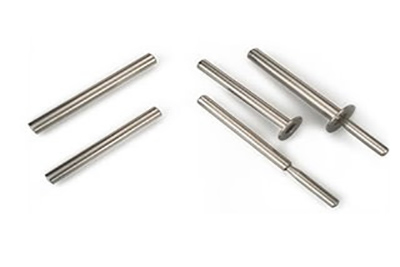
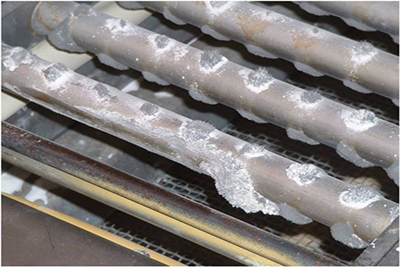
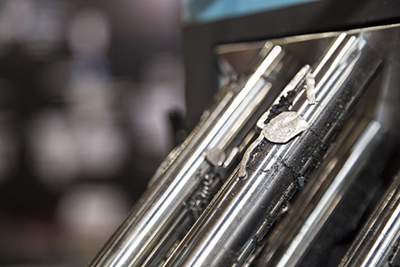
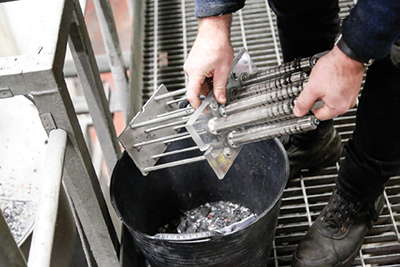
ก่อนอื่นมาพูดถึงโครงสร้างพื้นฐานและหลักการทำงานของแท่งแม่เหล็กกันก่อน
โดยทั่วไปแท่งแม่เหล็กประกอบด้วยแกนแม่เหล็กชั้นในที่มีความแข็งแรง (เช่น แม่เหล็กนีโอดิเมียม เหล็ก โบรอน) และปลอกหุ้มด้านนอก แกนแม่เหล็กจะสร้างสนามแม่เหล็กที่แข็งแรง ในขณะที่ปลอกหุ้มด้านนอกจะปกป้องแกนแม่เหล็ก ป้องกันการกัดกร่อน และทำความสะอาดได้ง่าย หลักการทำงานของแท่งแม่เหล็กคือการใช้สนามแม่เหล็กที่แข็งแรงเพื่อดึงดูดสิ่งเจือปนที่เป็นเฟอร์โรแมกเนติกในวัสดุที่ไหล ทำให้เกิดการบริสุทธิ์และการแยกตัว
จากผลการค้นหา พบว่าความเข้มของสนามแม่เหล็กของแท่งแม่เหล็กโดยทั่วไปจะอยู่ในช่วง 8,000 ถึง 12,000 เกาส์ ทำให้มีประสิทธิภาพในการดักจับอนุภาคเหล็กขนาดไมครอน อย่างไรก็ตาม สภาพแวดล้อมการทำงานที่มีความเข้มสูงนี้ยังต้องการคุณสมบัติพื้นผิวของแท่งแม่เหล็กที่สูงกว่าด้วย
แล้วทำไมแม่เหล็กถึงต้องมีการเคลือบผิว?
ห้ามสัมผัสแม่เหล็กเปล่า (โดยปกติคือ NdFeB หรือเฟอร์ไรต์) กับสภาพแวดล้อมการทำงานโดยตรงด้วยเหตุผลดังต่อไปนี้:
1. การป้องกันการกัดกร่อน: แม่เหล็ก NdFeB ประสิทธิภาพสูง โดยเฉพาะอย่างยิ่งแม่เหล็กที่ประกอบด้วยเหล็ก นีโอดิเมียม และโบรอนเป็นหลัก มีปฏิกิริยาทางเคมีสูงมาก และสามารถออกซิไดซ์และเกิดสนิมได้ง่าย เมื่อถูกกัดกร่อน คุณสมบัติทางแม่เหล็กจะลดลงอย่างมาก จนอาจนำไปสู่ความเสียหายในที่สุด
2. ความทนทานต่อการสึกหรอ: ภายใต้สภาวะการไหลของวัสดุด้วยความเร็วสูงหรือการเสียดสีกับอนุภาคแข็ง พื้นผิวของแม่เหล็กที่สัมผัสจะสึกกร่อนอย่างรวดเร็ว ทำให้ความสมบูรณ์ของแม่เหล็กลดลง
3. สุขอนามัยและความสะอาด: ในอุตสาหกรรมอาหารและยา พื้นผิวจะต้องเรียบ ไม่มีมุมอับ และทำความสะอาดง่าย เพื่อป้องกันการเจริญเติบโตของแบคทีเรีย และต้องเป็นไปตามมาตรฐานสุขอนามัยของ FDA, USDA และมาตรฐานอื่นๆ
4. การป้องกันฉนวน: การบำบัดบางอย่างสามารถให้ชั้นฉนวนไฟฟ้าเพื่อป้องกันการกัดกร่อนทางเคมีไฟฟ้า
5. ความแข็งแกร่งที่เพิ่มขึ้น: ตัวเรือนโลหะช่วยรองรับโครงสร้างให้กับแกนแม่เหล็กที่เปราะบาง (โดยเฉพาะ NdFeB) ป้องกันไม่ให้แตกสลายภายใต้แรงกระแทกที่รุนแรง
ตัวเลือกการบำบัดพื้นผิวแท่งแม่เหล็กแบบกระแสหลัก
การบำบัดพื้นผิวหลักๆ ต่อไปนี้จะมีให้เลือกใช้ ขึ้นอยู่กับวัสดุแกนแม่เหล็ก สภาพแวดล้อมการใช้งาน และงบประมาณต้นทุน
1. การหุ้มสแตนเลส
นี่เป็นวิธีการรักษาแบบคลาสสิกและเป็นที่นิยมที่สุด แกนแม่เหล็กถูกปิดผนึกอย่างสมบูรณ์ในท่อสเตนเลสสตีลไร้รอยต่อ (โดยปกติจะเป็นสเตนเลสสตีล 304 หรือ 316L)
* ข้อดี:
* ทนทานต่อการกัดกร่อนได้ดีเยี่ยม: ทนทานต่อการกัดกร่อนจากความชื้น สารเคมีต่างๆ และวัสดุต่างๆ
* ความแข็งแรงสูง: ช่วยปกป้องแกนแม่เหล็กให้แข็งแกร่ง ทนต่อแรงกระแทกและแรงกดดัน
* พื้นผิวเรียบ ทำความสะอาดง่าย และเป็นไปตามข้อกำหนดด้านสุขอนามัย
* อายุการใช้งานยาวนาน: ช่วยปกป้องแกนแม่เหล็กได้สูงสุดภายใต้สภาวะการทำงานส่วนใหญ่ ช่วยยืดอายุการใช้งานโดยรวมของแท่งแม่เหล็ก
* การใช้งานที่เกี่ยวข้อง: เหมาะสำหรับเกือบทุกอุตสาหกรรม โดยเฉพาะอย่างยิ่งอุตสาหกรรมที่ต้องมีสุขอนามัยสูงและทนต่อการกัดกร่อน เช่น อุตสาหกรรมอาหาร อุตสาหกรรมยา และอุตสาหกรรมเคมี สเตนเลส 316L เนื่องจากมีความทนทานต่อการกัดกร่อนของคลอไรด์ไอออนได้ดีเยี่ยม จึงเป็นตัวเลือกที่ต้องการสำหรับการใช้งานที่ต้องการความแม่นยำสูง เช่น อาหารและสภาพแวดล้อมทางทะเล
2. การชุบด้วยไฟฟ้า
สำหรับแม่เหล็ก NdFeB การชุบด้วยไฟฟ้าเป็นวิธีการที่คุ้มต้นทุนสำหรับการทาเคลือบป้องกันโดยตรงบนพื้นผิวแม่เหล็ก
* การชุบแบบทั่วไป:
* การชุบนิกเกิล (Ni-Cu-Ni): เป็นตัวเลือกที่นิยมใช้กันมากที่สุด ให้รูปลักษณ์ที่สดใส ทนทานต่อการกัดกร่อนและการสึกหรอได้ดี ราคาไม่แพงนัก
* การชุบสังกะสี: ความต้านทานการกัดกร่อนต่ำกว่าการชุบนิกเกิล แต่คุ้มค่ากว่า โดยทั่วไปจะใช้ในสภาพแวดล้อมแห้งหรือในพื้นที่ที่การป้องกันการกัดกร่อนมีความสำคัญน้อยกว่า
* การชุบอีพอกซี: ให้การเคลือบแบบหนาและเป็นธรรมชาติ พร้อมคุณสมบัติทนทานต่อสารเคมีและเป็นฉนวนไฟฟ้าได้ดีเยี่ยม
* ข้อดี:
* คุ้มค่าคุ้มราคา
* สามารถสร้างชั้นป้องกันที่บางมาก โดยมีผลกระทบต่อขนาดของแม่เหล็กน้อยที่สุด
* ข้อเสีย :
* โดยทั่วไปแล้วการเคลือบจะบาง และหากเกิดจุดเสียหาย การกัดกร่อนอาจแพร่กระจายเข้าด้านในได้
* ไม่ทนทานต่อการสึกหรอเท่ากับการหุ้มด้วยสแตนเลส
* เหมาะสำหรับการใช้งานในอุตสาหกรรมที่ต้องคำนึงถึงต้นทุนและมีสภาพแวดล้อมการทำงานที่ค่อนข้างอ่อนโยน เช่น การกำจัดผงเหล็กแห้งในอุตสาหกรรมพลาสติก ไม้ และวัสดุก่อสร้างบางประเภท
3. การเคลือบเทฟลอน (PTFE)/โพลีเตตระฟลูออโรเอทิลีน
เทฟลอนมีชื่อเสียงในเรื่องคุณสมบัติไม่ติดกระทะ ทนทานต่อสารเคมี และทนต่ออุณหภูมิสูงและต่ำ
* ข้อดี:
* คุณสมบัติไม่ติดกระทะขั้นสุด: มีประสิทธิภาพสำหรับวัสดุที่เหนียว ชื้น และยึดเกาะติดง่าย (เช่น น้ำเชื่อม ซอส และเนื้อสับ) สิ่งสกปรกจะหลุดออกโดยอัตโนมัติ ทำให้ทำความสะอาดง่ายอย่างยิ่ง
* ทนทานต่อสารเคมีได้ดีเยี่ยม: ทนทานต่อกรด เบส และตัวทำละลายอินทรีย์ที่เข้มข้นเกือบทั้งหมด
* เป็นไปตามมาตรฐานเกรดอาหาร เหมาะสำหรับอุตสาหกรรมอาหารและยา
* ข้อเสีย :
* เคลือบค่อนข้างอ่อน ง่ายต่อการขีดข่วนจากของมีคม
* ต้นทุนสูงกว่าการชุบด้วยไฟฟ้าแบบเดิม
* เหมาะสำหรับอุตสาหกรรมที่ต้องจัดการวัสดุที่มีความหนืดสูง เช่น การแปรรูปอาหาร (ช็อกโกแลต แยม น้ำมัน) สารเคมี และเม็ดสี
4. การเคลือบยาง (โพลียูรีเทน/ซิลิโคน)
การหุ้มแท่งแม่เหล็กด้วยชั้นยางจะช่วยปกป้องเป็นพิเศษ
* ข้อดี:
* มีคุณสมบัติกันกระแทกและทนต่อการสึกหรอดีเยี่ยม เหมาะอย่างยิ่งสำหรับการจัดการวัสดุขนาดใหญ่ แข็ง และมีฤทธิ์กัดกร่อน (เช่น แร่ พลาสติกรีไซเคิล ทราย และกรวด)
* ลดแรงกระแทกและเสียงรบกวน: ลดเสียงรบกวนและการสั่นสะเทือนในท่อความเร็วสูง
* เพิ่มแรงเสียดทาน : ช่วยในการเคลื่อนย้ายวัสดุในระหว่างการลำเลียง
* ข้อเสีย :
* ไม่เหมาะสำหรับสภาพแวดล้อมที่มีอุณหภูมิสูงหรือที่มีตัวทำละลายอินทรีย์
* ไม่ถูกสุขอนามัยเท่าสแตนเลสและเทฟลอน โดยทั่วไปไม่เหมาะสำหรับการสัมผัสกับผลิตภัณฑ์อาหารสำเร็จรูปโดยตรง
* เหมาะสำหรับ: อุตสาหกรรมหนักและอุตสาหกรรมที่ต้องใช้การขัดถู เช่น อุตสาหกรรมเหมืองแร่ อุตสาหกรรมเซรามิก อุตสาหกรรมวัสดุก่อสร้าง และการรีไซเคิลขยะ
เลือกเสื้อผ้าป้องกันให้เหมาะกับการใช้งานของคุณอย่างไร?
การเลือกวิธีการเคลือบผิวขึ้นอยู่กับความต้องการเฉพาะของคุณ คุณสามารถดูแนวทางการตัดสินใจต่อไปนี้:
1. อุตสาหกรรมและคุณสมบัติของวัสดุ
* อาหาร/ยา: แนะนำให้ใช้สแตนเลส (316L) หรือเคลือบเทฟลอน
* สภาพแวดล้อมที่มีสารเคมี/กัดกร่อนสูง: เคลือบเทฟลอนหรือสแตนเลส 316L
* พลาสติก/ผงแห้ง/สภาพแวดล้อมที่ไม่รุนแรง: การชุบนิกเกิลเป็นทางเลือกที่ประหยัด
* วัสดุสำหรับการทำเหมือง/วัสดุกัดกร่อน: การเคลือบยางถือเป็นทางเลือกที่ดีที่สุด
2. ความชื้นและวิธีการทำความสะอาด
* สภาพแวดล้อมที่เปียกชื้นที่ต้องใช้การทำความสะอาดด้วยน้ำ/ไอน้ำ: เลือกการเคลือบสแตนเลสแบบปิดผนึกเต็มรูปแบบหรือการเคลือบเทฟลอน
* สภาพแวดล้อมแห้ง: ยอมรับได้ทั้งการชุบด้วยไฟฟ้าหรือสแตนเลส
3. ความหนืดของวัสดุ
* ความหนืดสูง : เลือกเคลือบเทฟลอนโดยไม่ต้องลังเล
4. งบประมาณค่าใช้จ่าย
* เพื่องบประมาณที่เพียงพอและอายุการใช้งานและความน่าเชื่อถือสูงสุด: การเคลือบสแตนเลส
* สำหรับงบประมาณจำกัดและสภาพแวดล้อมที่ไม่เอื้ออำนวย: การชุบด้วยไฟฟ้า
ท้ายที่สุด การเคลือบพื้นผิวแท่งแม่เหล็กนั้นไม่ได้เป็นเพียงแค่การเสริมแต่งเพื่อ "ตกแต่ง" เท่านั้น แต่ยังมีความสำคัญอย่างยิ่งต่อประสิทธิภาพ อายุการใช้งาน และความปลอดภัย ตั้งแต่การชุบด้วยไฟฟ้าขั้นพื้นฐานไปจนถึงการเคลือบพิเศษขั้นสูง แต่ละเทคโนโลยีล้วนมีข้อดีและสถานการณ์การใช้งานที่แตกต่างกันไป ด้วยความก้าวหน้าอย่างต่อเนื่องของเทคโนโลยีอุตสาหกรรม เทคโนโลยีการเคลือบพื้นผิวแท่งแม่เหล็กจึงมีการพัฒนาอย่างต่อเนื่อง เพื่อมุ่งสู่ความเป็นมิตรต่อสิ่งแวดล้อม ความทนทาน และความชาญฉลาดยิ่งขึ้น
การเลือกโซลูชันการเคลือบผิวที่เหมาะสมต้องพิจารณาปัจจัยหลายประการอย่างครอบคลุม ทั้งสภาพแวดล้อมการทำงาน งบประมาณ และข้อกำหนดด้านประสิทธิภาพ ด้วยกระบวนการเคลือบผิวทางวิทยาศาสตร์และการบำรุงรักษาที่เหมาะสม แท่งแม่เหล็กจึงสามารถรักษาประสิทธิภาพการทำงานที่เสถียรภายใต้สภาวะการทำงานที่รุนแรงหลากหลายรูปแบบ จึงเป็นโซลูชันที่เชื่อถือได้สำหรับการแยกสิ่งเจือปนเหล็กในการผลิตเชิงอุตสาหกรรม
แท็ก :